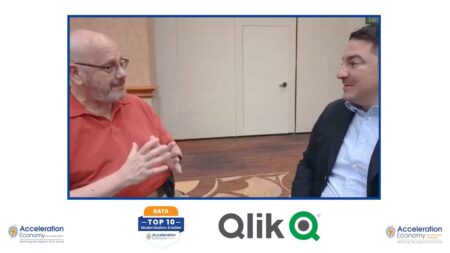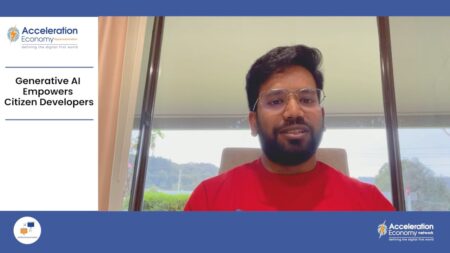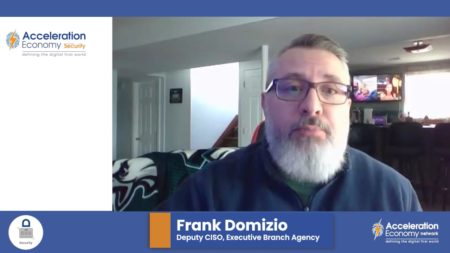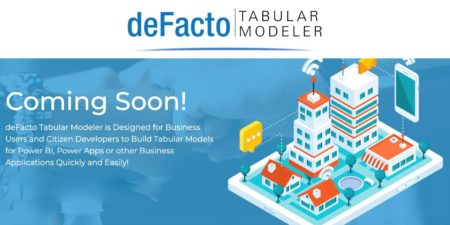In this interview from QlikWorld 2023, Qlik Global Product Marketing VP Josh Good and Wayne Sadin discuss the company’s tools and customer strategies.
Search Results: citizen developers (134)
Generative AI has the potential to enhance low-code/no-code tools, elevating the capabilities of citizen developers.
Low-code/no-code platforms are becoming increasingly popular due to a scarcity of technical expertise. The addition of AI components is making these tools smarter.
Frank Domizio aporta una visión sobre ciberseguridad en el desarrollo de citizen developers y desarrollos de aplicaciones low-code no-code.
Frank Domizio explains how citizen developers add value to an organization but suggests that they need access to the right support in order to succeed.
Low-code/no-code platforms begot citizen developers and their innovative solutions, but a lack of formal training brings risks that must be managed.
Is Shadow IT a problem to be stopped or a way for the SMB CIO to get more done with less? Regardless, the rise of the citizen developer opens opportunities to solve a variety of business challenges.
Many see low-code development tools as primed for explosive growth over the next 3 years. Do low-code/no-code apps have unlimited potential? And could they put professional developers out of work? In this piece, we dive into these questions and more.
End users with little to no IT background can learn data engineering and data science with the help of low-code/no-code platforms, but they must understand foundational aspects of the fields to avoid creating messy situations.
Citizen automation is akin to citizen development, with a greater emphasis on automating API integration between common cloud apps.
A pure-play citizen development approach won’t last. It suffers from adaptability and scalability issues, notes Robson Grieve, Outsystems.
Heavy coding is no longer necessary. It’s essential for companies to understand low-code/no-code and what that means for their businesses.
Could low-code/no-code make traditional IT obsolete? We consider the impact low-code/no-code is having and consider how programmers can stay relevant.
Sponsored by Oracle. As companies embrace in-house software dev, Oracle’s new low-code APEX Cloud Service delivers power, speed & security.
Are Power Users and Citizen Developers the same thing? Where do you draw the line? Check out my take on this topic and decide which one you are.
deFacto Tabular Modeler is Designed for Business Users & Citizen Developers to Build Tabular Models for Power BI, Power Apps or other Business Applications.
At its annual developer conference, SAP rolled out not one but three new automation technologies, hoping to recruit citizen developers to its platform.
Nowadays, low-code/no-code are buzzwords that you often hear coupled with the PowerApps platform. Microsoft truly changed the ICT landscape with the introduction of PowerApps, a focus on democratising solution development, and empowering citizen developers. However, with the public preview release of the PowerApps Component Framework (formerly known as the Custom Control Framework) hardcore developers can now rejoice with an exciting frameworks to play with. The PowerApps Component Framework allows you to build your own PowerApps custom controls and move away from the good old web resources approach. The framework expands on the platform’s capability and fills the gap when it comes to building custom rich controls. Come along to this session to see how we highlight the existing issues with web resources and demonstrate how those resources can be replaced with the latest framework. Live demo will include from building a control and deploying to Dynamics.
This targeted hands-on 2 day training will provide a deep dive experience into building flows with practical scenarios, lab exercises, best practices and more. We’ll cover various flow connector scenarios (SharePoint, CDS, Excel etc.), UI flows (Robotic Process Automation), Business Process flows, Adaptive Cards, and integration scenarios for flows with Power Apps, Power Virtual Agents & AI Builder.
Module 1 – Introduction to Power Automate
•Where Power Automate fits in the Business Application Platform
•Features & components of a flow
•Types of Power Automate flows
•Automated flows
•Instant flows
•Scheduled flows
•Business Process flows
•UI flows
•Flow mobile
•Flow Management
•Flow & SharePoint
•Demos
Hands-on lab exercise
•Track customer survey feedback with Microsoft Forms and flow.
•Time Tracking with excel and flow button.
Module 2 – Flow Approvals
•Approval action in flow
•Approval types
•Approval Patterns – State Machine, Reminders, Escalations etc.
•Best Practices
•Demos
Hands-on lab exercise – Leave Request Approval flow with SharePoint.
Module 3 – Power Automate + Adaptive Cards
•Introduction to Adaptive Cards
•Post Adaptive card to Teams
•Demo
Hands-on lab exercise – Post an adaptive card to Teams for approval scenarios.
Module 4 – Flow Expressions & Trigger Conditions
•Introduction to expression language for flow
•Where and how to use expressions
•Expressions in flow Trigger Conditions
•Tips & Tricks
•Demos
Module 5 – UI flows – Robotic Process Automation
•RPA Capabilities with UI flows
•Types of UI flows – Desktop and Web.
•Best practices
•Demos
Hands-on lab exercise
•Currency Conversion using Web UI flow
•Enter data into legacy system of record from Common Data Service (CDS) using Desktop UI flow
Module 6 – Business Process flows
•BPF Overview
•BPF with Model-driven App
•Best practices
•Demo
Module 7 – Flow Integration Scenarios
Part 1 – Integration with Power Apps
•Power Apps Overview
•Calling a flow from Power Apps
Hands-on lab exercise – Create a pdf file from Power Apps using flow and store in SharePoint
Part 2 – Integration with Power Virtual Agents (PVA)
•PVA Overview
•Calling a flow from PVA
•Demo – Calling the Graph API from flow & PVA
Hands-on lab exercise – Build a bot to fetch data from Common Data Service (CDS) Knowledge repository using flow
Part 3 – Integration with AI Builder
•AI Builder Models Overview
•Using AI Builder with flow demos
Hands-on lab exercise – Invoice processing using flow, AI Builder & SharePoint
Module 8 – Power Automate Application Lifecycle Management
•Power Platform Admin Center
•Flow management connectors & PowerShell
•DLP Policies
•Best practices
Audience: IT Pros, Business Users, Developers, Power Users, Citizen Developers
Level: Beginner & Intermediate
Preparation: Please bring your own internet capable Windows PC to class for the hands-on lab portion/class exercises.
Successful enterprise projects use a variety of continuous integration and advanced DevOps tools. These tools and techniques take significant time and investment as well as ongoing maintenance to ensure the process runs smoothly. What about the small implementations with a handful of users and potentially only one or two citizen developers building the business application? This session covers some simple best practices, tools and techniques to ensure the work on small to medium Dynamics 365 and Power Platform business application development is properly archived in source control and updates are rolled out in a simple, but controlled fashion.
The content of this session is geared toward an audience with intermediate-level knowledge of the subject area.




















